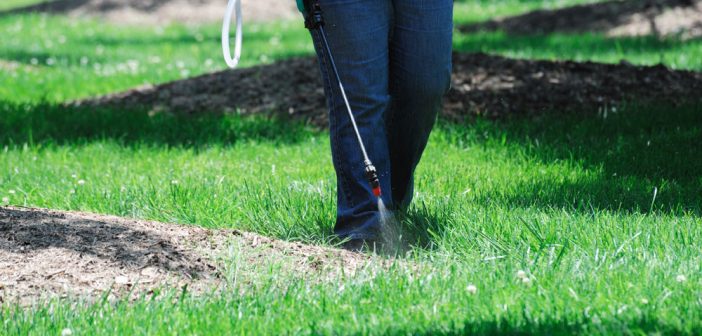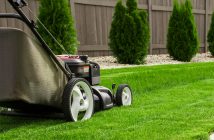Controlling weeds in your lawn might seem like an unwinnable war, but it is one worth fighting. In fact, a lush, green lawn might seem like a vanity project, but healthy lawns serve quite a few purposes. Here are easy tips to help you control weeds in your lawn.
Manually
Weeding by hand can be dreadful. However, for large, isolated clusters of weeds throughout your yard, manual weeding can be one of the quickest, most effective ways to return your lawn to its thick, natural luster.
Gloves
For small patches, simply pulling up the weeds by hand, while wearing gloves, can be quick and effective. For the best results, begin weeding at the first sign of shoots, especially before summer sets in and the ground becomes baked hard. If the ground is already hard, water the area and wait six hours. Remove the weeds by hand when the ground, it’s the easiest way to extract them.
Tools
For larger clusters of weeds, kneeling and pulling weeds might not be an option. Instead, a triangle-tipped hoe can be your best friend. For best results, all you have to do is place the tip of the hoe about an inch or so away from the cluster of weeds. Using the toe of your foot, press the hoe into the ground at a 45-degree angle. Doing so will allow you to dig out the root system.
Spray
Chemical sprays and all-natural sprays will help you with larger patches of weeds or weeds strewn thoroughly throughout your lawn. When selecting a spray, there are two types you need to consider.
Contact Sprays
Contact sprays kill on contact. Because they kill via contact, you want to make sure it is not going to rain within 24 hours. Otherwise, the rain will wash away all the spray. For the best results, spray in the morning when it is cool and the spray will not evaporate in the sun.
Systemic Sprays
Systemic sprays kill by soaking into the weeds and soil. Once they are absorbed, they kill all the weeds–all the way to the roots. However, they require more time for absorption to complete.
Mowing
Dandelions are the bane of lawn lovers everywhere. Although it might be fun and strangely rewarding to mow them over and lop off their little yellow heads, it is not effective. However, what is effective is mowing off their heads just prior to spraying. Contact and systemic sprays can then penetrate even easier into their exposed stems.
In contrast, spraying contact killer onto a bed of healthy dandelions will kill them, but it will cause them to droop and lie down. Over time, some will survive. Additionally, when you mow, you will miss many of them entirely because the blade is usually too high to reach them. The result will be a freshly mowed lawn interspersed with gobs of green, dandelion-stem spaghetti.
Mulch
For weeds around your foundation, bushes, or trees, it is very effective to lay a layer of mulch. Mulch starves the weeds of sunlight, and eventually, the underlying weeds die. Of course, the lawn beneath the mulch also dies, but the mulch provides an attractive, landscaped look, which can be very pleasing.
Focused Watering
A sprinkler might be necessary to water the primary parts of your lawn. However, if you use a hose and spray nozzle to water around bushes, this type of focused watering will keep your bushes healthy while starving the nearby lawn weeds.
Corn Gluten
Sprinkling your lawn with all-natural, weed-prevention substances containing corn gluten will naturally control weeds. Through a process of natural evolution, corn gluten came to be a defensive substance contained in cornstalks. For instance, over time, those stalks that had the substance survived. Those that did not, died. The reason the corn without corn gluten died is because corn gluten helps prevent weeds from growing around the corn stalks. As different types of corn competed for nutrients in the soil, the ones that could out-compete weeds naturally won.
Because of its place as an all-natural weed fighter, corn gluten is now an ingredient in a variety of weed-control products. If you put it on your lawn, it will do what it evolved to do–prevent weeds from obtaining nutrients.
Re-seeding
If you re-seed your lawn, you infuse your lawn with fresh lawn shoots that will crowd and starve weeds for nutrients.
For best results, do not use a seed dispenser. Seed dispensers fling the seed outward, and the seed just sort of lands in the lawn. Instead, seed by hand. With a full fist of seeds, bend close to the lawn and throw the seeds at the lawn–with force. Doing so will help embed the seeds deep between the blades of grass. Embedding the seeds in such a way will do two things.
This will help ensure more seeds are able to take root. Second, it will ensure fewer seeds are eaten by birds. The result will be a thicker lawn that will have a better chance at maintaining its own against weeds.









